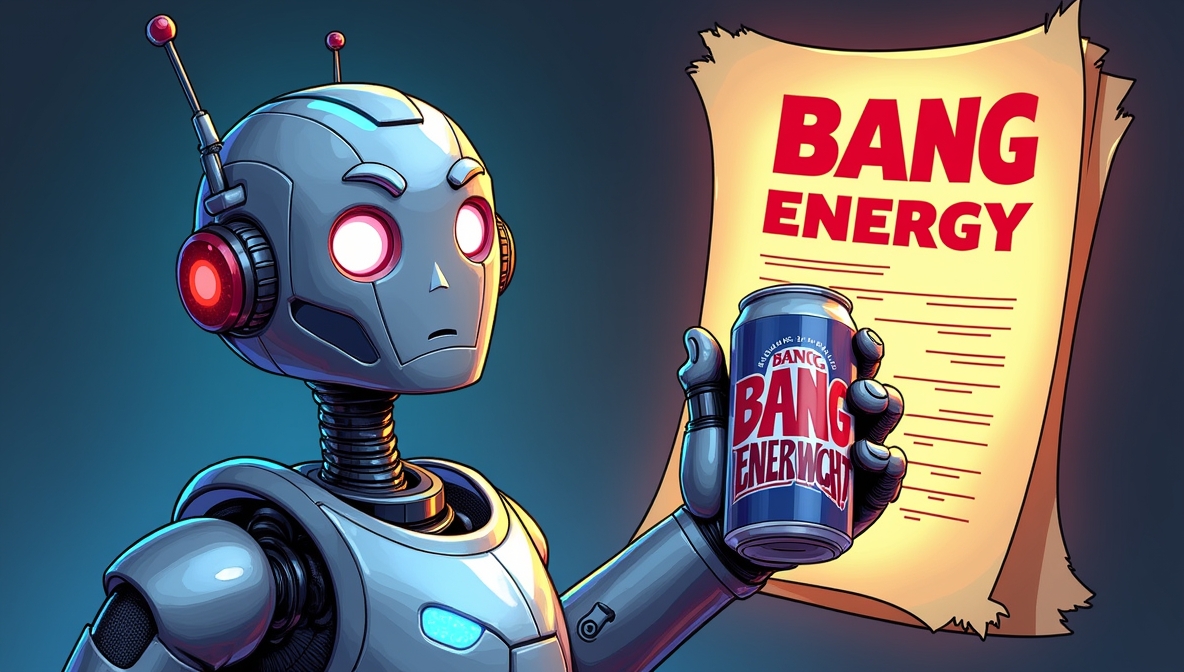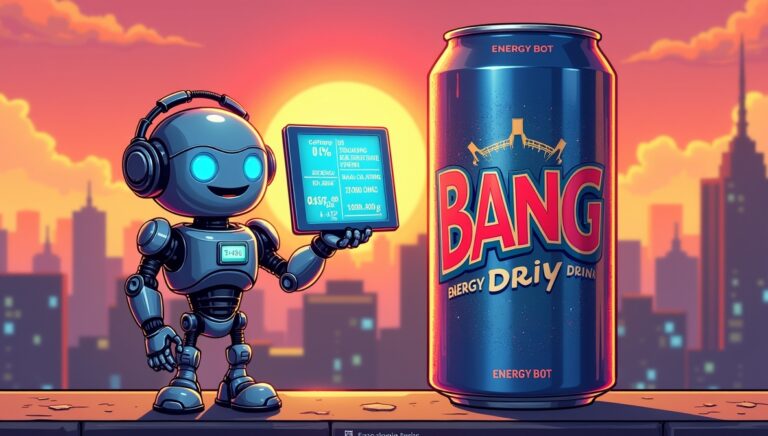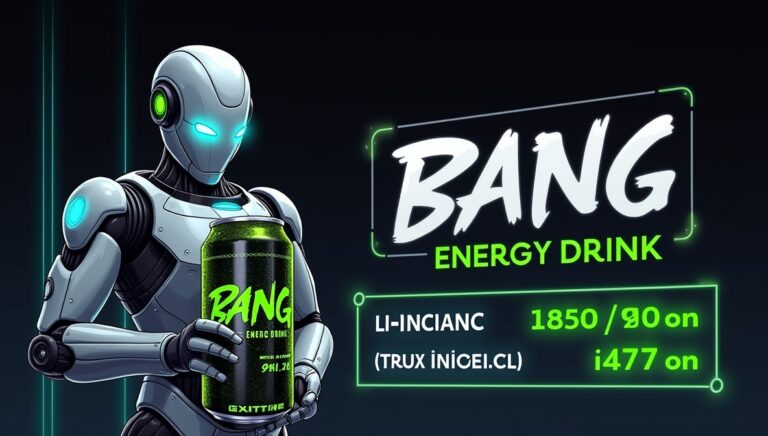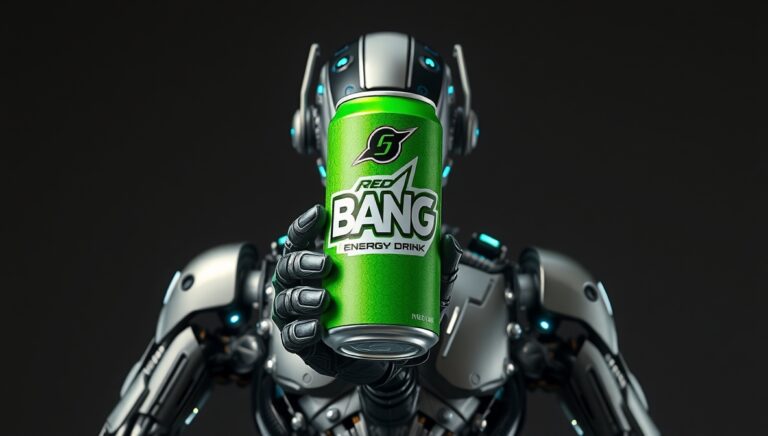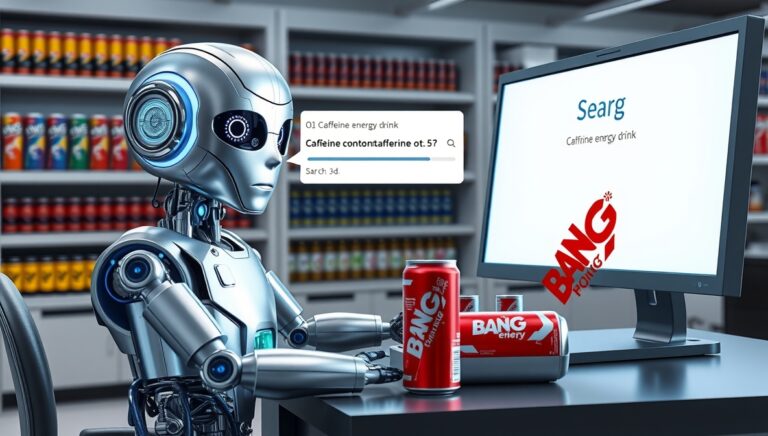bang energy lawsuit – Latest Updates and Legal Insights
Introduction
The bang energy lawsuit has captured major attention in the business and fitness world, highlighting the intense competition and legal challenges within the energy drink industry. This case revolves around issues such as false advertising, trademark disputes, and misleading product claims that have raised questions about transparency and brand ethics. As the legal proceedings unfold, the controversy surrounding Bang Energy and its parent company has become a key example of how marketing strategies can lead to serious legal consequences when they cross certain boundaries.
The Rise, Fall, and Legal Lessons Behind a Beverage Empire
In recent years, the bang energy lawsuit has become one of the most talked-about legal battles in the beverage industry. What began as a meteoric rise of a flashy, fitness-focused energy-drink company soon transformed into a case study how much caffeine is in a bang energy drink about marketing claims, corporate competition, and the fragile nature of success in modern consumer markets. This article explores the origins of the Bang Energy brand, the controversies that surrounded it, and how its courtroom drama reshaped perceptions of business ethics and brand management.
The Birth of Bang Energy and Its Explosive Growth
Bang Energy was launched with a clear vision: to stand out in a saturated market dominated by giants like Red Bull and Monster. Founded by entrepreneur Jack Owoc, the brand built its identity around performance, fitness, and lifestyle rather than merely caffeine and sugar. Its neon-colored cans, bold flavors, and influencer-driven campaigns quickly caught the attention of gym enthusiasts and younger consumers.
However, as the bang energy lawsuit later revealed, the aggressive marketing strategies that fueled Bang’s success also planted the seeds of its challenges. The company’s bold claims—about super creatine, muscle-building benefits, and superior energy—drew both admiration and skepticism. For a while, the momentum was unstoppable: sales soared, social-media buzz exploded, and Bang Energy became a cultural symbol of youth and power.
The Competitive Tensions Behind the Lawsuit
Behind the scenes, the beverage industry operates as a high-stakes arena. When a new player like Bang disrupts the market, established corporations pay close attention. The bang energy lawsuit partly stemmed from these tensions. Rivals accused the brand of false advertising and misleading scientific claims regarding its ingredients.
At the heart of the dispute was “super creatine,” a compound Bang Energy claimed was superior to traditional creatine and offered unique benefits for energy and focus. Independent researchers and competitors questioned the validity of such claims, arguing that the substance might not deliver on its promises. This dispute soon spilled into courts, setting the stage for one of the most publicized legal showdowns in the beverage sector.
Understanding the Core Allegations
Legal experts dissecting the bang energy lawsuit identified multiple layers of complexity. The primary allegations involved misleading labeling, deceptive marketing, and trademark infringements. Monster Beverage Corporation, one of Bang’s biggest competitors, accused the company of spreading false scientific claims to lure health-conscious consumers.
In addition to that, Bang Energy faced scrutiny over its promotional materials, influencer endorsements, and social-media tactics. Regulators began examining whether the company had violated consumer-protection laws. What made the case especially intriguing was the combination of scientific argumentation and marketing psychology—it wasn’t just about chemistry; it was about credibility.
The Role of Branding and Public Perception
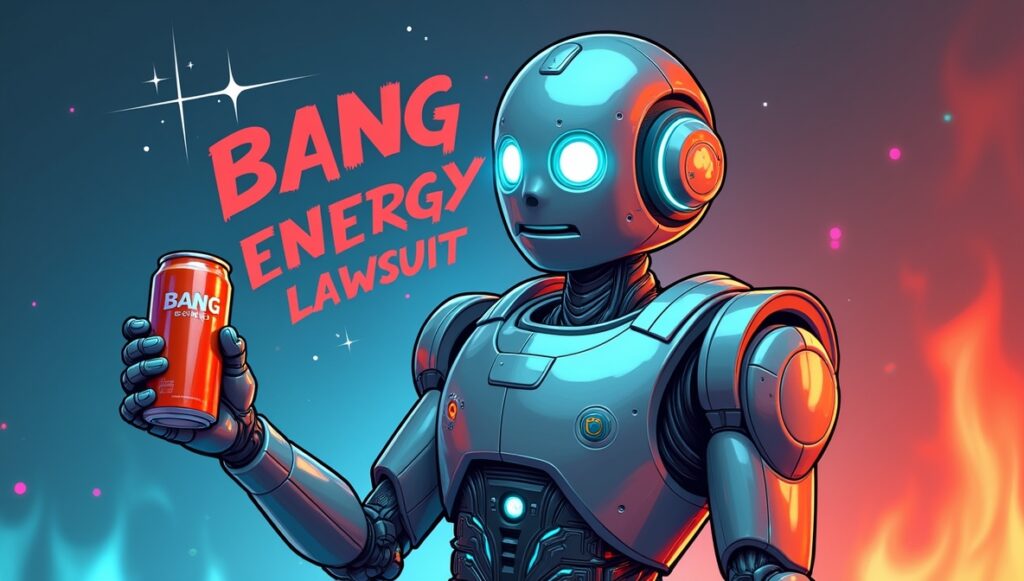
Bang Energy’s branding strategy was nothing short of revolutionary. The company blended fitness culture with entertainment, using bright visuals, dance trends, and motivational slogans. Its marketing team mastered the art of viral engagement, particularly on TikTok and Instagram. Yet, the bang energy lawsuit revealed how brand perception can rapidly turn when legal controversy arises.
For many loyal consumers, the lawsuit cast doubt on the product’s authenticity. In industries where image equals value, even minor dents to credibility can cause massive financial damage. The case underscored an essential truth: building a brand is not just about attracting attention—it’s about maintaining integrity once the spotlight shines too bright.
Corporate Response and Leadership Decisions
Throughout the unfolding of the bang energy lawsuit, company leadership attempted to maintain a confident and defiant stance. Jack Owoc, known for his charismatic and outspoken personality, often used social media to defend his brand and criticize competitors. He portrayed Bang Energy as a disruptor unfairly targeted by larger corporations afraid of innovation.
This defensive strategy resonated with some fans but alarmed investors and analysts. Publicly challenging legal claims while litigation is ongoing can complicate matters, and the company’s bold communications sometimes clashed with legal realities. It served as a reminder that strong leadership requires balancing emotion with legal prudence.
Financial Fallout and Bankruptcy Proceedings
The financial implications of the bang energy lawsuit were immense. Legal battles drained resources, disrupted partnerships, and scared off potential investors. At its peak, Bang Energy generated billions in annual revenue, but mounting legal expenses and declining consumer trust forced the company into bankruptcy proceedings.
During this period, analysts pointed out that the company’s dependence on aggressive marketing and limited product diversification left it vulnerable. Once the legal controversies hit mainstream news, retailers and distributors became cautious. The case illustrated how financial resilience and risk management are vital to sustaining success in volatile markets.
Industry Reactions and Market Implications
The bang energy lawsuit sent shockwaves through the energy-drink industry. Competitors quickly adjusted their advertising language, ensuring scientific accuracy and compliance with regulations. Many brands began investing in third-party testing and certification to avoid similar pitfalls.
From a broader perspective, the lawsuit pushed the industry toward greater transparency. Regulators started paying closer attention to the claims made by beverage companies, particularly those targeting health and performance. It also reminded marketers that the modern consumer is more informed than ever, capable of fact-checking corporate promises in real time.
Legal Precedents and Ethical Takeaways
Beyond its immediate commercial impact, the bang energy lawsuit contributed to a growing body of legal precedent on advertising ethics. Courts highlighted the need for verifiable scientific evidence when companies promote performance-enhancing claims. The ruling set clearer boundaries for how brands can discuss proprietary formulas, ingredients, and health outcomes.
From an ethical standpoint, the case reinforced the value of honesty and accountability. In an age where influencers amplify brand messages to millions, misinformation spreads fast. Companies that blur the line between creativity and deception risk both legal and reputational ruin.
The Role of Social Media and Influencers
Bang Energy’s meteoric rise was inseparable from its influencer network. Fitness models, dancers, and online personalities helped turn the drink into a cultural phenomenon. However, as the bang energy lawsuit progressed, many influencers found themselves caught in the crossfire.
Some were accused of promoting misleading claims without proper disclosure or understanding of the product’s composition. This controversy highlighted an emerging legal gray area: how much responsibility do influencers bear for the accuracy of the claims they echo? The outcome of the lawsuit provided guidance to marketers and influencers alike—authenticity must come before virality.
Consumer Trust and Brand Recovery
After facing such intense scrutiny, rebuilding trust becomes a herculean task. For Bang Energy, the road to redemption required more than rebranding—it demanded transparency, communication, and consistent product quality. Even after the bang energy lawsuit reached its resolutions, consumer perception remained divided.
Some loyalists viewed the brand as a misunderstood innovator unfairly punished by corporate politics. Others saw it as a cautionary tale about over-promising and under-delivering. The truth likely lies somewhere in between, but the lasting lesson is clear: in modern markets, trust is currency, and once it’s lost, recovery is slow and costly.
Lessons for Entrepreneurs and Emerging Brands
The bang energy lawsuit offers a powerful learning opportunity for startups and business leaders. Ambition and creativity are essential, but they must be grounded in compliance and truth. Entrepreneurs often feel pressure to make bold claims to stand out, but exaggeration can backfire.
The case teaches that innovation should be backed by verifiable data, and marketing teams must collaborate closely with legal and scientific experts. Risk management isn’t a formality—it’s a foundation for sustainable growth. Transparency not only prevents lawsuits but builds stronger relationships with customers.
Broader Cultural and Economic Impacts
Culturally, the bang energy lawsuit represents more than a legal dispute; it’s a reflection of modern consumerism. In a world where speed and hype often overshadow substance, the case forced both businesses and buyers to slow down and scrutinize what they consume—literally and figuratively.
Economically, the lawsuit also exposed the fragility of rapid-growth companies dependent on image rather than infrastructure. The sudden fall of a major brand sent ripples through distributors, retailers, and advertising agencies. It became a wake-up call that sustainability in business requires not only innovation but also integrity.
Scientific Transparency in Product Development
One of the central lessons from the bang energy lawsuit is the importance of scientific transparency. Consumers are more educated about nutrition and supplements than ever before, and vague scientific claims no longer pass unchallenged.
Future beverage companies must prioritize clinical research, third-party testing, and clear labeling. Science should serve as a backbone, not a marketing prop. When companies communicate data honestly, they build credibility and attract loyal, informed customers who appreciate both quality and honesty.
The Future of the Energy-Drink Industry
Despite the turmoil, the global energy-drink market continues to expand, driven by changing lifestyles and growing demand for performance beverages. However, the bang energy lawsuit permanently altered the industry’s playbook. Companies now operate under stricter scrutiny, with consumers expecting greater transparency about ingredients, sugar content, and health implications.
Emerging brands are adopting cleaner formulations and more responsible advertising. Sustainability, both environmental and ethical, is becoming a selling point. The days of unchecked marketing hyperbole are fading, replaced by an era of accountability and innovation grounded in science.
Government and Regulatory Oversight
The involvement of federal and state regulators in the bang energy lawsuit underscored the government’s evolving role in consumer protection. Agencies began implementing more precise guidelines for supplement labeling, caffeine content, and health claims.
These policies not only safeguard consumers but also help level the playing field for honest businesses. By enforcing transparency, regulators ensure that innovation flourishes within ethical boundaries. This shift benefits the entire industry by fostering trust and long-term stability.
Marketing Reinvented: From Hype to Honesty
Marketing experts analyzing the bang energy lawsuit suggest that the future belongs to brands that blend creativity with credibility. Instead of relying on exaggerated performance claims, companies can connect emotionally through authentic storytelling. Consumers respond to honesty, shared values, and community engagement more than to flashy slogans.
The case transformed marketing classrooms into laboratories for ethics discussions. It reminded professionals that the power of branding lies not in what is promised but in what is delivered.
Media Coverage and Public Opinion
Throughout the saga, media coverage played a crucial role in shaping how the public perceived the bang energy lawsuit. Headlines often exaggerated developments, framing the conflict as a David-versus-Goliath battle or a cautionary tale of corporate overreach.
Public opinion fluctuated depending on which narrative dominated. Some commentators sympathized with Bang’s entrepreneurial spirit; others focused on consumer protection. The constant media attention demonstrated how public relations and legal strategy must work together in high-profile corporate disputes.
The Human Element: Employees and Communities
Behind the corporate drama were thousands of employees whose livelihoods depended on the company’s survival. The bang energy lawsuit had ripple effects across local economies, warehouses, and marketing teams. For many workers, the uncertainty surrounding the brand’s future created anxiety and instability.
This human side of business litigation is often overlooked. The case reminds executives that legal and financial decisions extend far beyond balance sheets—they affect real lives and communities that rely on corporate integrity and foresight.
Recovery and Rebranding Efforts
Following the turmoil of the bang energy lawsuit, the company explored restructuring strategies, potential acquisitions, and new partnerships. Analysts debated whether the brand could reinvent itself without its controversial founder or whether a complete rebrand was necessary.
Some speculated that the energy-drink line could pivot toward cleaner ingredients and a more transparent identity, distancing itself from past controversies. Regardless of the outcome, the case provided a blueprint for how companies can rise again by acknowledging mistakes and rebuilding on stronger ethical foundations.
The Broader Legal Landscape
From a jurisprudential perspective, the bang energy lawsuit is now cited in discussions about corporate accountability and advertising law. Legal scholars analyze how the case balanced freedom of expression in marketing with the responsibility to protect consumers from misinformation.
It also demonstrated how rival companies can use litigation strategically—not merely to seek justice but to shape market dynamics. This dual function of lawsuits—as both legal mechanisms and competitive tools—adds a fascinating dimension to corporate law in the 21st century.
A Lasting Legacy
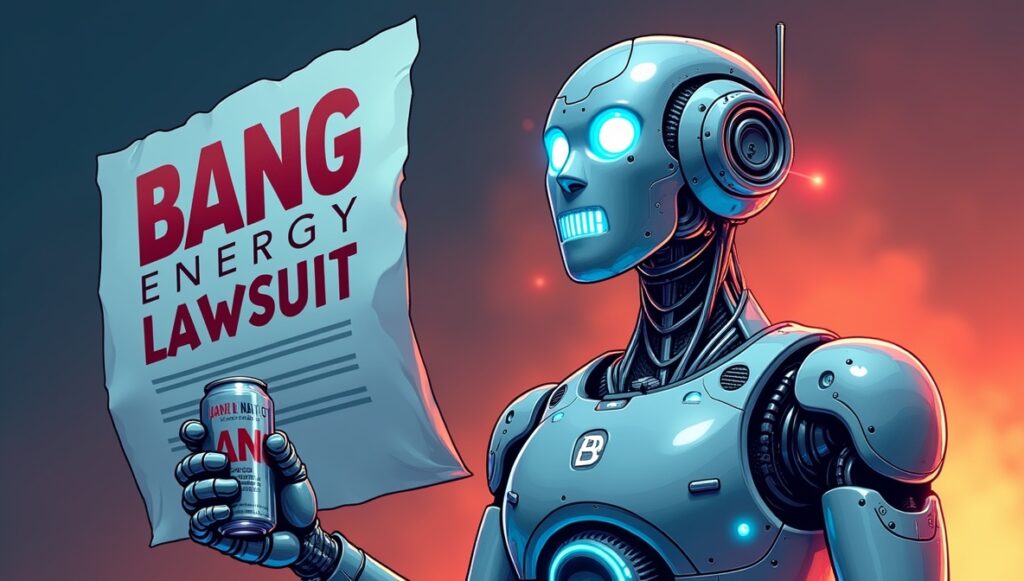
Years from now, the bang energy lawsuit will be remembered as a pivotal moment in the evolution of consumer protection and corporate transparency. It exposed weaknesses in both business strategy and legal preparedness, offering lessons that extend far beyond the beverage aisle.
For entrepreneurs, it is a story about ambition, accountability, and adaptability. For consumers, it’s a reminder to look beyond marketing gloss and demand honesty from the brands they support. And for regulators, it underscores the importance of proactive oversight in rapidly changing industries.
Conclusion: Lessons for the Next Generation of Innovators
In the end, the bang energy lawsuit serves as both a warning and an inspiration. It warns businesses that unchecked ambition can lead to downfall when ethics are ignored, but it also inspires future innovators to pursue bold ideas responsibly.
The modern marketplace rewards authenticity, data-driven claims, and sustainable growth. Brands that embrace these principles not only survive scrutiny but also thrive under it. As companies look ahead, the legacy of this lawsuit will continue to influence how products are developed, marketed, and trusted around the world.
True success lies not in avoiding controversy but in learning from it—and ensuring that progress never comes at the cost of truth.
